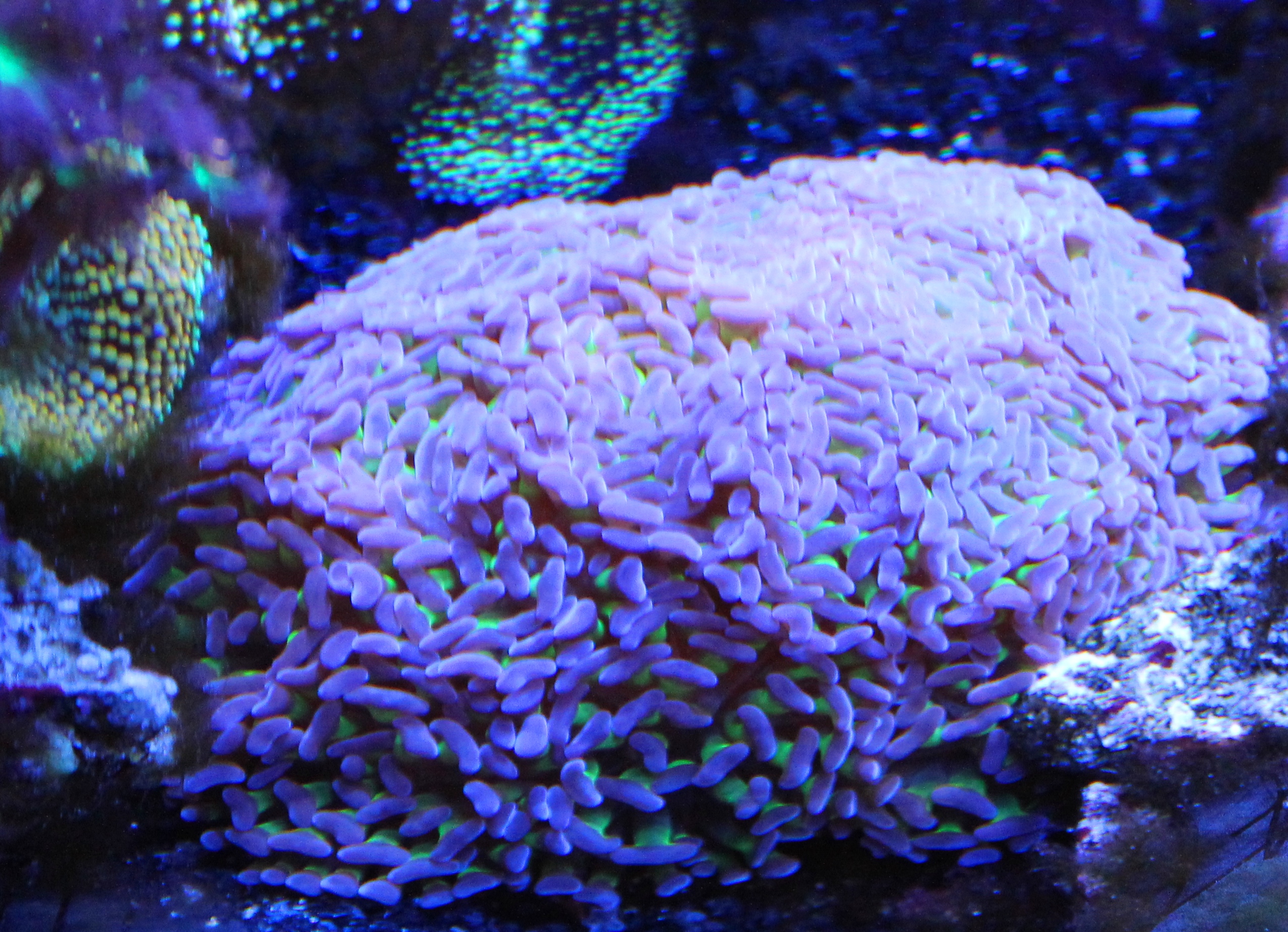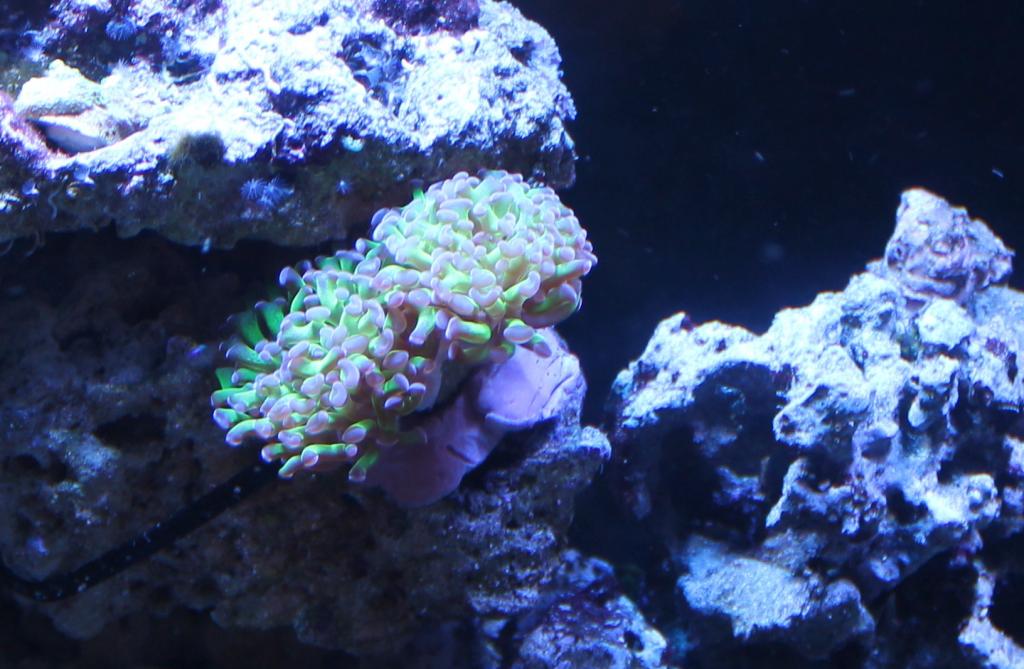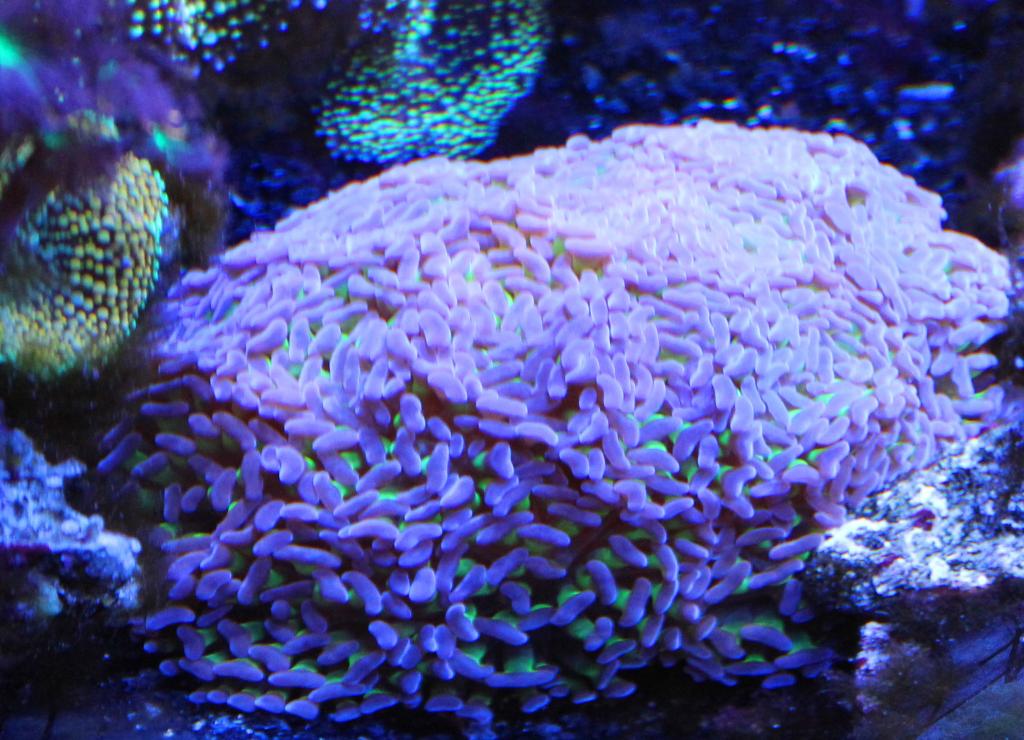
Hammer Corals
Scientific Name: Euphyilla Parancora
Common Name: Hammer Coral
Type of Coral: LPS (Large Polyp Stony Coral)
Lighting: Moderate and Moderate to High
Flow: Moderate and Moderate to High
Care Level: Moderate
Temperament: Semi-aggressive to Aggressive
Appearance
Hammer corals will have a base that consists of an exposed calcified skeleton structure. At the end of this structure will be individual fleshy heads with polyps on it. The tips of the polyps will typically be a lighter color as compared with the rest of the polyp. The heads can be a within a range of colors ranging from green, pink gold, and brown As this coral grows, the heads will split and the skeleton base will branch almost like a tree grows. The polyps on the heads of this coral will look almost like the head of a hammer which is where its common name originated from. These corals can sometimes be mistaken for a Torch coral or a Frogspawn Coral. The appearance of the polyps on the heads will allow you to properly identify a hammer coral.


Water Conditions
The below link highlights typical water conditions hammer corals, as with most LPS, will require. As this is a moderately difficult coral to keep, you should ensure your dKH, Cal and Mag levels are maintained at all times with minimal nitrate and phosphate levels. As this coral also has a calcified skeleton, it will consume calcium from your water. In set-ups with a good amount of LPS corals, it is not uncommon to have to dose dKH and Cal in order to keep the water parameters in line. With only a few LPS corals, a good water change schedule may be enough to maintain your parameters. In addition to the article in the below link, this coral can also benefit from maintaining strontium levels if you do not have a good water change routine using a very good quality salt.
https://www.reefaquarium.com/2013/the-basics-of-marine-aquarium-water-parameters/
General Information
Hammer corals, as with all other LPS corals, should be added to mature aquariums. Provided all their requirements are met, they can grow to a colony about the size of your average basket ball within a few short years. Unless you are planning to move or frag your hammer coral, you should give it as much as 30 inches of space in your tank.
The hammer coral will release long sweeper / feeder tentacles from its heads to collect food. This will mostly happen when the tanks lights are off. These tentacles can also sting and damage or kill other corals within reach, which is how the hammer coral will defend itself. This is what makes the hammer more of an aggressive coral as the tentacles can extend as much as 6 to 7 inches beyond the heads.
Although the hammer coral will get what it needs from the lighting in your tank, it can also benefit from micro plankton or manual feeding of small pcs of meaty foods placed directly on the mouths at the center of each head. Even though manual feedings are not required, it will help to accelerate growth.
Clownfish have also been known to host in hammer corals in aquariums that do not have anemones. Although this will not harm the clownfish, this can sometimes stress the coral to the point where some of its heads could die off.
As with all corals, the exterior slime coating can be a skin irritant or even highly toxic to humans so please, handle all corals with care. I would recommend wearing rubber gloves whenever you handle corals
Fragging
Hammer corals can be fragged with very good success.
Good day
I wonder if you could help me as i can’t find any info on hammer coral regarding damage or being hurt .
I did a water change and gravel clean on the 14.08.2016 and by accident part of my hammer’s arms was removed when i was sucking out water .He seems to be okay but was wondering will he die or can they carry on growing as normal if hurt ?
Thanks for taking your time to read my mail
Kind regards
Jillian
Hammer corals can come back from minor damage. I have been in similar situations and mine did come back in a few weeks. For the next 2 weeks complete a several extra water changes to help the coral heal. Keep a close eye on it. If it gets worse, try fragging off the damaged head.
I have a Hammer that is not opening, it has opened, but not it seems kinda angry. We didnt move it or do a water change. We did move it a few days later and it still wont open..any ideas would be appreciated.
Can you try putting it back to the last spot were it did best ?